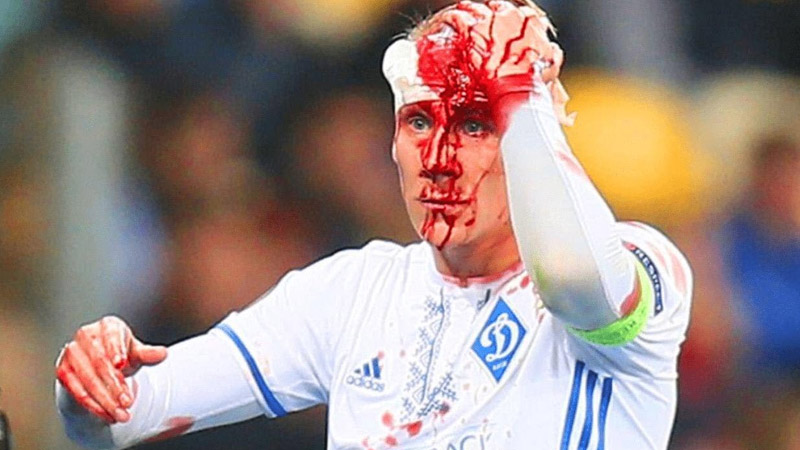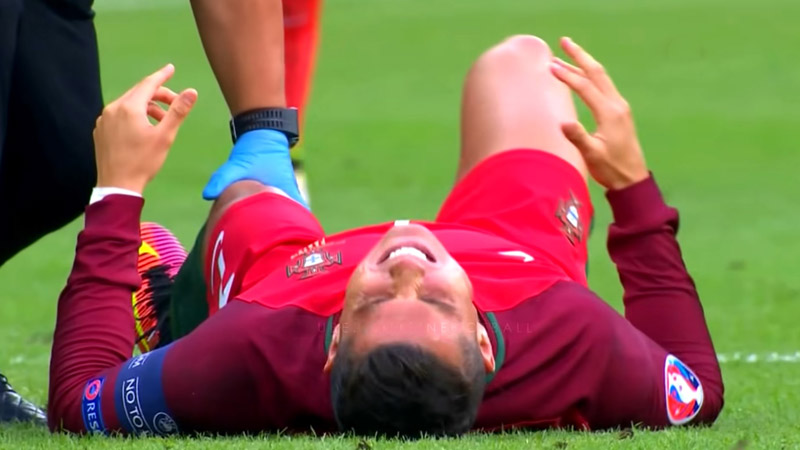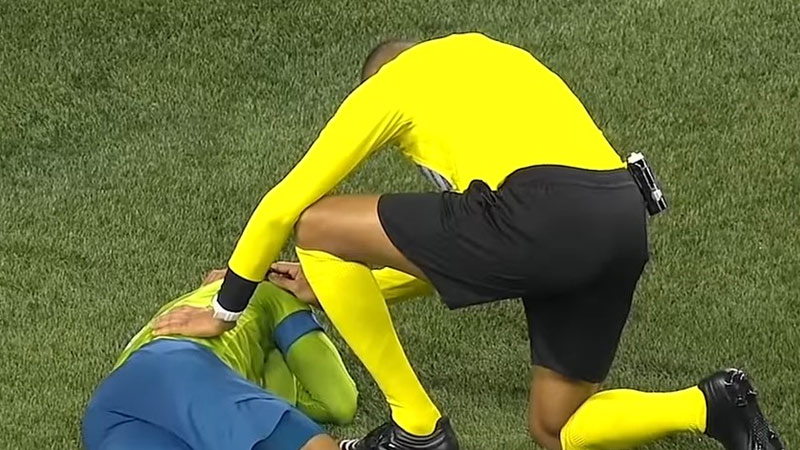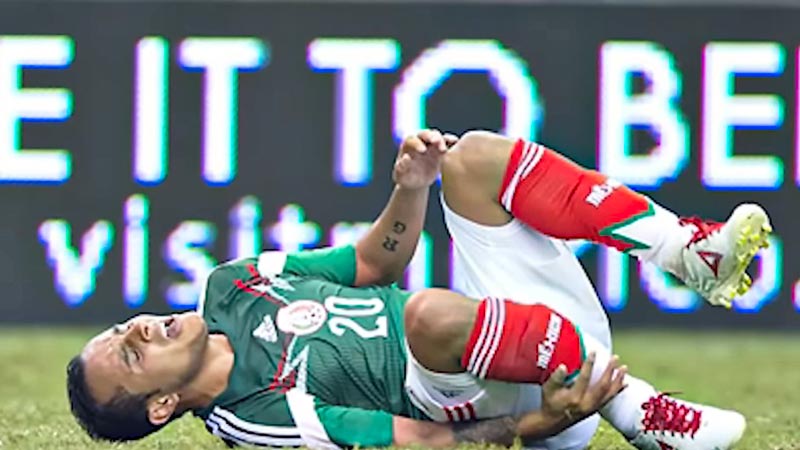Soccer, a sport known for its fast-paced action and physicality, occasionally sees players succumb to injuries on the field. When a player gets injured during a match, it triggers a series of rules and protocols designed to ensure their safety, fair play, and the overall integrity of the game.
Understanding these soccer-injured player rules is crucial for players, coaches, officials, and fans alike. In this article, we delve into the intricacies of soccer injured player rules, shedding light on the guidelines and procedures that come into play when a player is injured.
From the role of the referee and medical staff to the decision-making process for substitutions and potential game stoppages, we explore the measures in place to address injuries effectively.
Additionally, we examine the concept of “fair play” and how it influences the handling of injured players.
Whether you’re a player, a coach, or a passionate fan, familiarizing yourself with soccer injured player rules will deepen your understanding of the game and the importance of player safety. Join us as we navigate the challenges and complexities of soccer’s injured player rules.
What Are the Soccer Injured Player Rules?
To ensure the safety and well-being of players, various rules and regulations have been put in place to address injured players.
Players, coaches, and officials should familiarize themselves with the rules and regulations of the specific competition they are participating in to ensure compliance and player safety. Let’s explore the soccer injured player rules in detail.
Referee’s Role
The referee plays a crucial role in enforcing the rules and ensuring fair play. When a player is injured, the referee’s primary concern is the player’s safety. The referee has the authority to stop the game if they believe a player’s injury requires immediate attention.
Play Stopped for Injuries
If a player is injured during a game, the referee may stop play to allow for medical attention. The decision to stop play is at the referee’s discretion, based on the severity of the injury.
The referee will consider factors such as the player’s ability to continue, the nature of the injury, and the potential risk to the player’s health.
Medical Personnel
Once play is stopped, medical personnel are allowed onto the field to assess and treat the injured player. These medical professionals may include team doctors, physiotherapists, or paramedics. The referee will ensure that only authorized medical personnel enter the field to avoid any interference with the game.
Player Assessment
The medical personnel will assess the injured player’s condition and determine the appropriate course of action. They will evaluate the severity of the injury, provide immediate treatment if necessary, and decide whether the player can continue or needs to be substituted.
Substitution Rules
If a player is unable to continue due to injury, a substitution may be made. The injured player must leave the field, and a substitute player from the same team can enter the game.
The substitution must follow the rules set by the competition or league governing body, which typically allow a limited number of substitutions per game.
Temporary Suspension
In some cases, an injured player may receive on-field treatment and be able to continue playing after a brief suspension. This is often seen when the injury is minor, such as a cut or a knock.
The referee will determine the appropriate duration of the suspension, allowing the player to receive treatment without disrupting the flow of the game.
Head Injuries

Head injuries are taken very seriously in soccer due to their potential long-term effects. If a player sustains a head injury, the referee will stop play immediately to allow for a thorough assessment.
In many competitions, there are specific protocols in place for head injuries, including mandatory player substitution and medical evaluation before the player can return to the game.
Concussion Protocol
Concussions are a specific type of head injury that requires special attention. Many soccer organizations have implemented concussion protocols to ensure the safety of players.
These protocols typically involve the removal of the player from the game, a comprehensive medical evaluation, and a gradual return-to-play process that includes clearance from a medical professional.
Fair Play
Injured player rules also emphasize fair play and sportsmanship. If a player is injured, it is expected that the opposing team will return the ball to the injured player’s team after play is stopped. This act of fair play allows the injured player’s team to regain possession and resume the game from the point of interruption.
Time Added On
When play is stopped for an injured player, the referee will add additional time to the end of each half to compensate for the time lost. This ensures that both teams have an equal opportunity to play the full duration of the game.
It is important to note that the specific rules and regulations regarding injured players may vary depending on the competition or league. Different organizations may have their own guidelines and protocols in place to address player injuries.
Are There Any Exceptions?
Yes, there are certain exceptions to the soccer injured player rules. These exceptions may vary depending on the competition, league, or governing body. Here are a few common exceptions:
Advantage Rule
In some situations, the referee may choose not to stop play immediately if the injured player’s team has an advantage. The advantage rule allows play to continue if the team with the injured player maintains possession and has a promising attacking opportunity.
The referee will assess the situation and decide whether to stop play or allow the game to continue.
Serious Injuries

In the case of a serious injury, such as a suspected fracture or a potential life-threatening condition, the referee may stop play immediately, regardless of the advantage rule. The safety and well-being of the players take precedence over the flow of the game in such situations.
Time Constraints
In certain competitions or tournaments with strict time constraints, such as international matches or knockout stages, there may be less flexibility in allowing additional time for injured players.
In such cases, the referee may make a judgment call to minimize the interruption and ensure the game progresses within the allotted time.
Player Safety
If the referee believes that allowing an injured player to continue playing poses a risk to their health or exacerbates the injury, they may override the player’s desire to continue and insist on a substitution.
The referee’s primary responsibility is to ensure the safety of the players, and they have the authority to make decisions in the best interest of the player’s well-being.
VAR Intervention
With the introduction of Video Assistant Referee (VAR) technology in some competitions, the VAR officials may intervene in cases of potential serious injuries that were missed or not adequately addressed by the on-field referee.
The VAR officials can communicate with the referee and recommend stopping play or taking appropriate action based on video footage.
Note that the exceptions mentioned above are not exhaustive, and the specific exceptions and protocols may vary depending on the competition or league.
Players, coaches, and officials should familiarize themselves with the specific rules and regulations of the competition they are participating in to understand any additional exceptions or guidelines that may apply.
Referee Instructions for Player Injuries

Referees play a crucial role in ensuring the safety and well-being of players on the field. When it comes to player injuries, referees are responsible for making important decisions and following specific instructions. Here are some general guidelines and instructions for referees when dealing with player injuries:
Prioritize Player Safety
The safety of the players is of utmost importance. Referees should always prioritize the well-being of the injured player and take appropriate action to ensure their safety.
Stop Play if Necessary
If a player is seriously injured or requires immediate medical attention, the referee should stop play as soon as possible. This allows medical personnel to enter the field and provide the necessary assistance.
Assess the Severity
Referees should assess the severity of the injury to determine the appropriate course of action. They should consider factors such as the player’s ability to continue, the nature of the injury, and the potential risk to the player’s health.
Allow Medical Personnel on the Field
Once play is stopped, the referee should allow authorized medical personnel, such as team doctors or paramedics, to enter the field and attend to the injured player.
Referees should ensure that only qualified medical professionals are allowed on the field to avoid any interference with the game.
Communicate with Players and Coaches
Referees should communicate with the injured player, their teammates, and the opposing team’s captain or coach to gather information about the injury and assess the player’s condition.
This communication helps referees make informed decisions regarding the player’s ability to continue or the need for a substitution.
Follow Competition or League Protocols
Referees should be familiar with the specific protocols and guidelines set by the competition or league they are officiating.
These protocols may include specific instructions for head injuries, concussion assessments, or player substitutions. Referees should adhere to these protocols to ensure consistency and player safety.
Add Time to the Game
When play is stopped for an injured player, the referee should add additional time to the end of each half to compensate for the time lost. This ensures that both teams have an equal opportunity to play the full duration of the game.
Maintain Control and Fair Play
Referees should maintain control of the game and ensure fair play during the injury stoppage. They should prevent any unsporting behavior or time-wasting tactics by players or teams during this period.
Consult with VAR (if applicable)
In competitions where Video Assistant Referee (VAR) technology is in use, referees may consult with VAR officials in cases of potential serious injuries that were missed or not adequately addressed.
VAR officials can provide additional information or recommend appropriate action based on video footage.
FAQs
Can a player receive treatment on the field without play being stopped?
In general, play is stopped to allow for on-field treatment when a player is injured. However, in some cases, if the injury is minor and does not pose a risk to the player’s safety or the flow of the game, the referee may allow play to continue while the injured player receives treatment on the field.
Can a player re-enter the game after being substituted due to injury?
If a player is substituted due to injury, they are typically not allowed to re-enter the game.
Once a substitution is made, the injured player is considered officially replaced by the substitute player and cannot return to the field unless specific competition or league rules are allowing for temporary substitutions or re-entry.
What happens if a team has used all their substitutions and a player gets injured?
If a team has already used all their permitted substitutions and a player gets injured, they must continue playing with one less player for the remainder of the game.
This situation is known as playing “short-handed” or “with ten men.” The injured player cannot be replaced, and the team must adjust their tactics and strategy accordingly.
Can a player be penalized for faking an injury?
Faking an injury, also known as simulation or diving, is considered unsporting behavior and can result in disciplinary action. If a player is found to have intentionally simulated an injury to deceive the referee or gain an unfair advantage, they may receive a yellow card for unsporting behavior.
What happens if a player refuses medical treatment after an injury?
If a player refuses medical treatment after an injury, it is ultimately their decision. However, the referee may consider the player’s refusal as an indication that they are unable to continue playing safely. In such cases, the referee may insist on substitution.
Signing Out
Soccer injured player rules play a vital role in safeguarding the well-being of players and maintaining the integrity of the game.
These rules ensure that injured players receive prompt and appropriate medical attention while minimizing the impact on the flow of the match.
By understanding and adhering to these rules, players, coaches, officials, and fans contribute to a culture of safety and fair play in soccer. It is crucial to prioritize the health and welfare of the athletes, as injuries can have long-lasting consequences.
Moreover, soccer injured player rules highlight the importance of sportsmanship and respect within the game. The way teams and players respond to an injured opponent can demonstrate their commitment to fair play and compassion.
As we continue to enjoy the excitement and competitiveness of soccer, let us remember the significance of these rules and the responsibility we all share in ensuring the well-being of the players.







